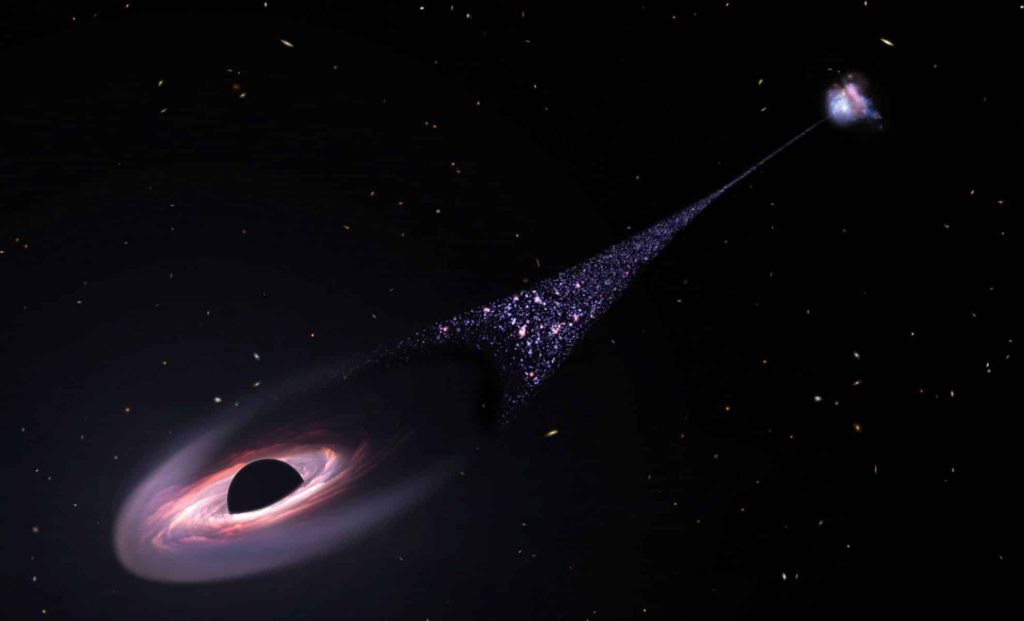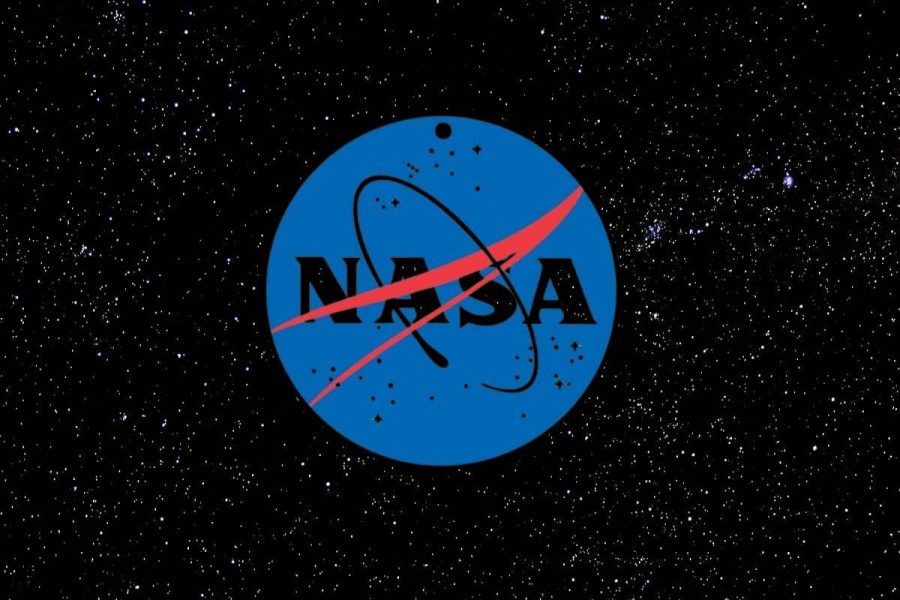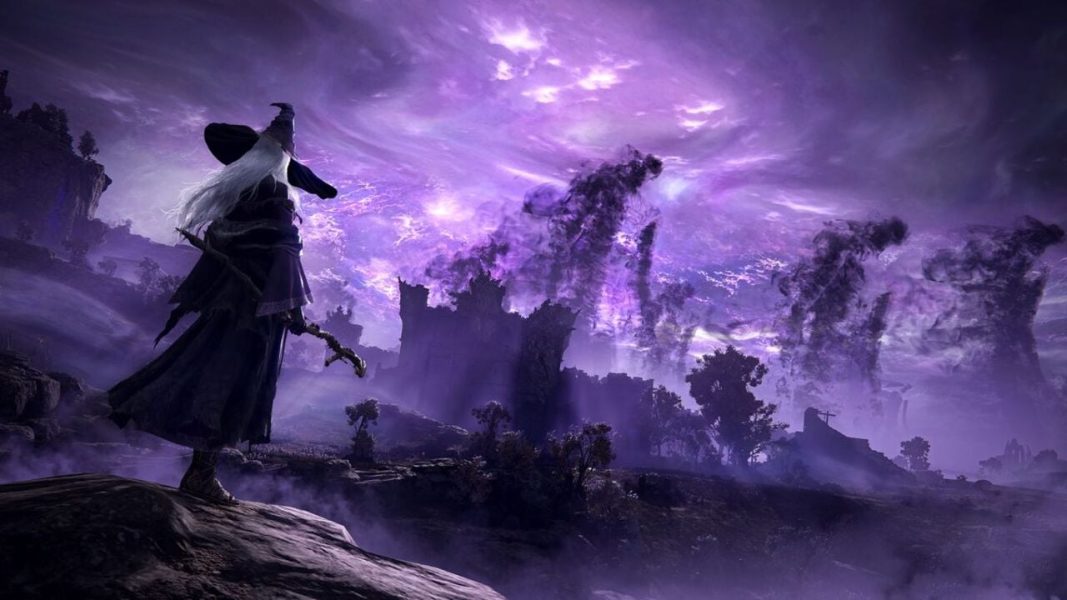A Supermassive Black Hole Is Heading Straight for the Milky Way—And Here’s What That Means for Our Galaxy – The Daily Galaxy –Great Discoveries Channel

A supermassive black hole lurking within the Large Magellanic Cloud is on a collision course with our galaxy, the Milky Way. Discovered by a team at the Harvard & Smithsonian Center for Astrophysics, this black hole, weighing around 600,000 solar masses, is on a path that will eventually lead to its merger with Sagittarius A*, the supermassive black hole at the heart of the Milky Way. The Milky Way galaxy, home to our solar system, is no stranger to the vast cosmic forces that shape the universe. Yet, an exciting discovery has unveiled an even more dramatic future: the Milky Way is headed toward a collision with a supermassive black hole. This black hole, nestled in the Large Magellanic Cloud (LMC), a dwarf galaxy that orbits the Milky Way, has been detected as part of an ongoing journey toward merging with our galaxy. While this event is set to occur billions of years in the future, it promises to reshape our understanding of black holes and their evolution. New research suggests that this collision could offer an unprecedented opportunity to study how black holes grow from relatively small masses to the monstrous, supermassive objects found at the centers of galaxies like our own.The groundbreaking research, led by Jiwon Jesse Han at the Harvard & Smithsonian Center for Astrophysics, has identified the presence of a supermassive black hole within the Large Magellanic Cloud, which is currently in the process of falling toward the Milky Way. This black hole is estimated to weigh around 600,000 solar masses, significantly smaller than the supermassive black hole at the center of the Milky Way, Sagittarius A*, which weighs about 4.3 million solar masses. The discovery is currently available on the preprint server arXiv and has been submitted to The Astrophysical Journal for further peer review.The detection of this hidden black hole was no easy feat, as black holes themselves do not emit detectable radiation unless they are actively consuming matter. Instead, the researchers had to employ indirect methods to uncover the object’s presence. Using hypervelocity stars—stars that travel at speeds much higher than the typical stars within a galaxy—the researchers were able to trace their motion and deduce that they were likely ejected by gravitational interactions with an unseen, massive object. The Hills mechanism, a phenomenon where a black hole interacts with two stars, causing one to be ejected at hypervelocity, played a key role in the researchers’ discovery.Black holes are notoriously difficult to detect because, without the accretion of matter, they do not emit light or radiation that we can observe directly. However, one of the best methods astronomers have to identify the presence of black holes is by studying the motion of nearby stars. If a star is moving in a way that cannot be explained by the gravitational influence of known objects, it may indicate the presence of a black hole. The Hills mechanism involves a gravitational interaction between a black hole and two stars, resulting in the ejection of one of the stars at a hypervelocity. By studying these high-speed stars, the researchers were able to trace their motion back to the Large Magellanic Cloud, where they found that the stars were likely ejected by a black hole with a mass of about 600,000 solar masses.This new finding provides important insights into the growth of black holes. It suggests that black holes do not necessarily need to start out as massive objects; instead, they may grow over time through interactions with other stars, eventually leading to the formation of supermassive black holes. The discovery challenges our understanding of black hole evolution and provides a new datapoint in the study of how black holes grow from stellar-mass objects to the monstrous, supermassive entities we observe in the centers of galaxies.The Large Magellanic Cloud is currently in orbit around the Milky Way, located about 160,000 light-years away. Over the course of the next 2 billion years, the LMC will eventually collide with our galaxy. The merger of the two galaxies will set in motion a dramatic chain of events, including the eventual collision of their central supermassive black holes. The supermassive black hole in the Large Magellanic Cloud will eventually make its way toward the galactic center, where it will merge with Sagittarius A*, creating an even larger black hole. While this event is billions of years away, it offers astronomers the unique opportunity to study the dynamics of galaxy mergers and the growth of black holes.Astrophysicists believe that this process is one of the key ways black holes grow over time. As galaxies collide and their central black holes merge, they form more massive black holes. The eventual merging of the Milky Way and the Large Magellanic Cloud could provide a unique opportunity to study this process in real time, although we won’t be around to see the final outcome. The discovery of the hidden black hole in the LMC opens the door to a new understanding of black hole growth, particularly in the context of galaxy mergers.Comment Save my name, email, and website in this browser for the next time I comment.
© 2024 | Daily Galaxy | All rights reserved
Source: https://dailygalaxy.com/2025/02/supermassive-black-hole-heading-milky-way/






